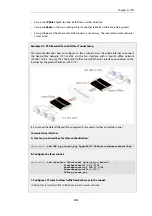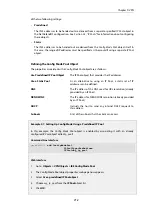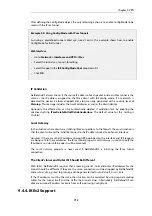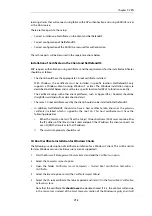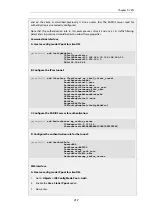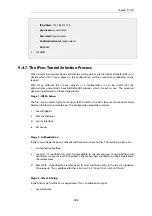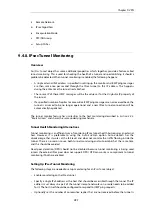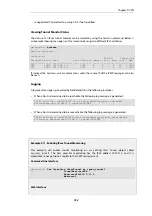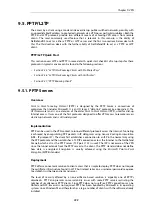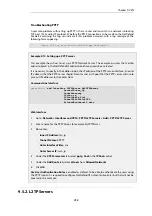
•
IP Pool : 192.168.189.30-192.168.189.50
•
Netmask : 255.255.255.0
•
DNS : 192.168.28.4
4.
Click OK
B. Configure the IPsec tunnel:
1.
Go to: Network > Interfaces and VPN > IPsec > Add > IPsec Tunnel
2.
Now enter:
•
Name: my_ikev2_client_tunnel
•
Local Network: lannet
•
Remote Network: all-nets
•
Remote Endpoint: all-nets
•
IKE Config Mode Pool: Static
3.
Select IKE Settings and enter:
•
Set the IKE Version to
IKEv2
4.
Select Authentication and enter:
•
Enable the X.509 Certificate option
•
For Gateway Certificate select
my_host_cert
•
For Root Certificate(s) add
my_root_cert
•
Enable the Require EAP for inbound IPsec tunnels option
•
Enable the Request EAP ID option
5.
Select Advanced and enter:
•
Enable the Add route dynamically option
•
Disable the Add route statically option
6.
Click OK
C. Configure a RADIUS server for authentication:
1.
Go to: Policies > User Authentication > RADIUS > Add > RADIUS Server
2.
Now enter:
•
Name: my_radius_server
•
IP Address: 203.0.113.20
•
Shared Secret: MYSHAREDRADIUSSECRETSTRING
Chapter 9: VPN
718
Summary of Contents for NetDefendOS
Page 30: ...Figure 1 3 Packet Flow Schematic Part III Chapter 1 NetDefendOS Overview 30 ...
Page 32: ...Chapter 1 NetDefendOS Overview 32 ...
Page 144: ...Chapter 2 Management and Maintenance 144 ...
Page 284: ...Chapter 3 Fundamentals 284 ...
Page 392: ...Chapter 4 Routing 392 ...
Page 419: ... Host 2001 DB8 1 MAC 00 90 12 13 14 15 5 Click OK Chapter 5 DHCP Services 419 ...
Page 420: ...Chapter 5 DHCP Services 420 ...
Page 573: ...Chapter 6 Security Mechanisms 573 ...
Page 607: ...Chapter 7 Address Translation 607 ...
Page 666: ...Chapter 8 User Authentication 666 ...
Page 775: ...Chapter 9 VPN 775 ...
Page 819: ...Chapter 10 Traffic Management 819 ...
Page 842: ...Chapter 11 High Availability 842 ...
Page 866: ...Default Enabled Chapter 13 Advanced Settings 866 ...
Page 879: ...Chapter 13 Advanced Settings 879 ...


